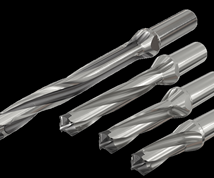How to Correctly Size a Hydraulic Cylinder
Appears in Print as: 'The Designer's Edge: How to Correctly Size a Hydraulic Cylinder '
This week Randy shares steps for correctly sizing a hydraulic cylinder on a mold.
#Basics #FAQ
Formula for designing the proper cylinder size.
In order to correctly size a hydraulic cylinder on a mold, follow these steps.
Featured Content
1.Train the mold designer to understand the potential maximum plastics pressures, so he/she can accurately calculate the plastics pressures that the cavity surface area will have on the component. Many will look only at pack/hold pressures, when peak plastics pressures must be considered. Also, do not solely base it off the material being used, as there are factors that can drastically impact pressures. If you are unsure then round it up. Note, if you want a robust tool and process then do not ever round it down. Once you have determined the maximum plastics pressures, the rest is easy.
2.Accurately calculate the cavity surface that is on the surface area of the component. Then multiply that number by the maximum plastics pressure we discussed. The result will be the required pressure for designing your cylinder.
3.Determine the bore size of your cylinder. Typically, I will design the bore size so that it exceeds the cavity pressure force by 1.5X to ensure robustness. For example, if expected cavity pressure was 10,000 psi and the cavity surface area of the component was 1 square inch, we know that there would be 10,000 pounds of force acting on the component (10,000 pounds per square inch X 1 square inch). If we multiply 10,000 by 1.5 ratio, we find that we need approximately 15,000 pounds of force to counteract the cavity pressure.
Give it a try. Let’s take a stab at determining the required hydraulic cylinder bore size by calculating the surface area of the cylinder bore size and the hydraulic pressure being used on the machine or hydraulic pump cart. For example, for 2,000 psi of hydraulic pressure, calculate the surface area of the bore diameter, which is 3.14 X R2. If you use a 3-inch bore cylinder, calculate the radius (1.5 x 1.5 x 3.14), which equals 7.065 square inches of surface area. Then multiply this number by the 2,000 hydraulic psi being used. This equates to 14,130 psi of holding force (7.065 square inches X 2000 hyd psi). In this scenario, a 3-inch bore cylinder should provide a robust condition.
RELATED CONTENT
-
Why Choose a Valve-Gated Hot Runner?
Moldmakers need to be aware of how different gating technology can affect their customers when designing a hot runner system into a mold.
-
Selecting a Carbide End Mill for Aluminum Applications
Specific geometries and characteristics of a carbide end mill are required for efficient machining of aluminum.
-
Texturing Molds for Thermoplastics: Factors for Success
Factors to consider when selecting a texture or grain for a thermoplastic mold or die.












